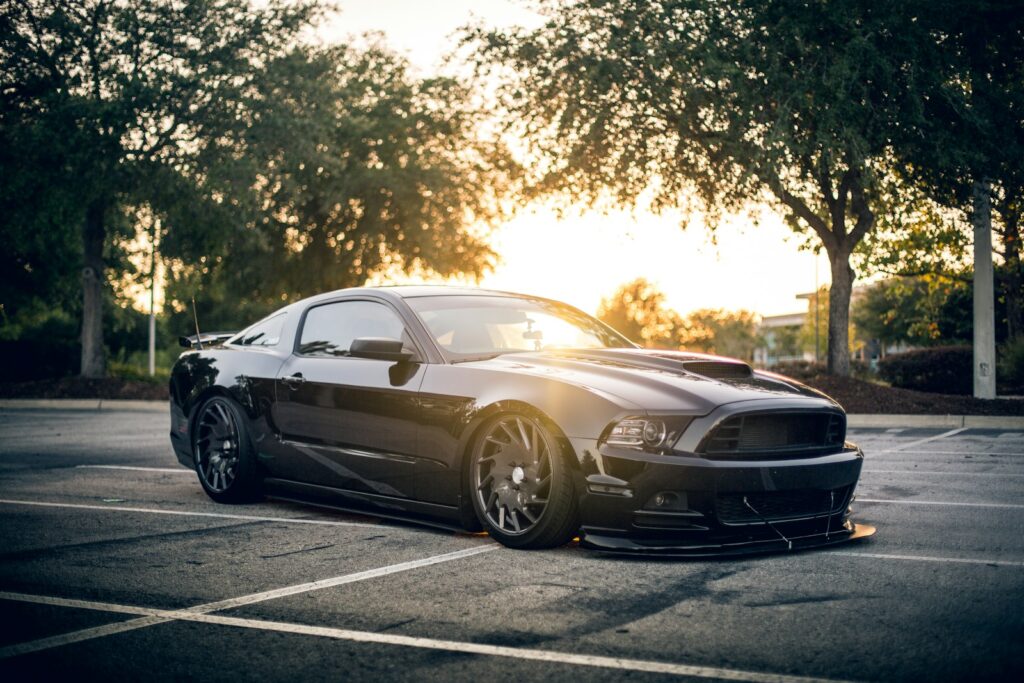
The dawn of the 21st century brought with it an exhilarating blend of technological advancement and cultural shifts, fundamentally reshaping how we consumed media, interacted with the world, and even what we wore. Far from being a mere transitional period, the 2000s stands as a pivotal decade where many of today’s ubiquitous digital experiences first took root, while older forms of entertainment made their last stand or underwent radical transformation. This era, often viewed through a nostalgic lens, was a vibrant crucible of innovation and evolution.
From the living room to our pockets, and from the silver screen to the nascent digital realm, the first decade of the millennium pulsed with dynamic energy. It was a time when gaming consoles reached new heights of popularity, portable devices democratized entertainment on the go, and the very concept of how we listened to music was turned on its head. Examining these foundational changes offers a compelling look at the forces that defined an entire generation, setting the stage for the digital age we inhabit today.
We embark on a journey through seven of these defining phenomena, dissecting their impact, their innovations, and the reasons behind their monumental significance in the tapestry of the 2000s. Each element, though seemingly distinct, wove into a larger narrative of a world rapidly embracing the future, often at the expense of the past.

1. **The PlayStation 2 Era: A Console Gaming Colossus**The 2000s marked a golden age for console gaming, with the PlayStation 2 leading the charge as an undeniable titan of the industry. Released alongside formidable competitors like the Xbox and the GameCube, the PlayStation 2 wasn’t just a gaming machine; it was a multimedia entertainment hub that captivated millions worldwide. Its extensive library of titles and strong market presence cemented its legacy as one of the most successful consoles in history.
The console’s popularity was bolstered by a slew of blockbuster games that pushed the boundaries of interactive storytelling and gameplay. Titles such as *Grand Theft Auto: San Andreas* and *Tony Hawk’s Pro Skater 3* became cultural touchstones, defining the gaming experience for a generation. These games, often released across both the PlayStation 2 and Xbox platforms, showcased the growing graphical prowess and immersive worlds that players craved.
Beyond the mainstream hits, the PlayStation 2 also fostered a vibrant ecosystem for critically acclaimed “sleeper hits” that carved out their own niche. The sheer volume and diversity of games available meant that there was something for every taste, establishing the console as a central piece of living room entertainment. Its widespread adoption paved the way for gaming to become an even more integral part of popular culture, setting high standards for console generations to come.
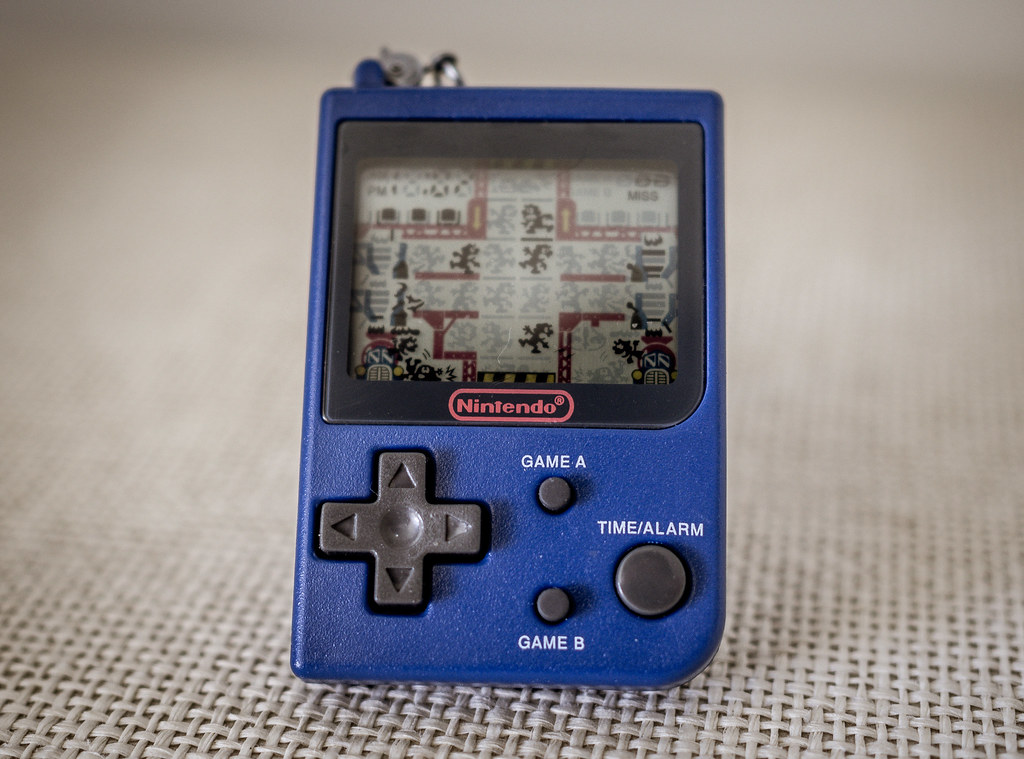
2. **Portable Gaming’s Ascent: Nintendo’s Dominance on the Go**While home consoles dominated the living room, portable gaming systems saw an equally impressive rise, fundamentally changing how and where people played games. Nintendo’s handheld devices, particularly the Nintendo DS and Game Boy Advance, were the undisputed champions of this segment throughout the 2000s, selling millions and introducing gaming to a broader demographic than ever before.
The Nintendo DS, with its innovative dual screens and touchscreen capabilities, offered a fresh approach to interactive entertainment. It quickly became home to a new wave of incredibly popular titles that showcased its unique features. Games like *Pokémon Diamond and Pearl*, *New Super Mario Bros.*, *Nintendogs*, and *Brain Age: Train Your Brain in Minutes a Day!* were not just best-sellers; they were phenomena that appealed to casual and hardcore gamers alike.
This era solidified Nintendo’s reputation as a pioneer in portable gaming, demonstrating that engaging experiences could be delivered in a compact, accessible format. The success of these handhelds proved that there was a massive market for gaming that could fit into a pocket, anticipating the mobile gaming explosion of later decades. The Game Boy Advance, too, continued its impressive run, ensuring Nintendo’s stranglehold on the mobile gaming market for much of the decade.
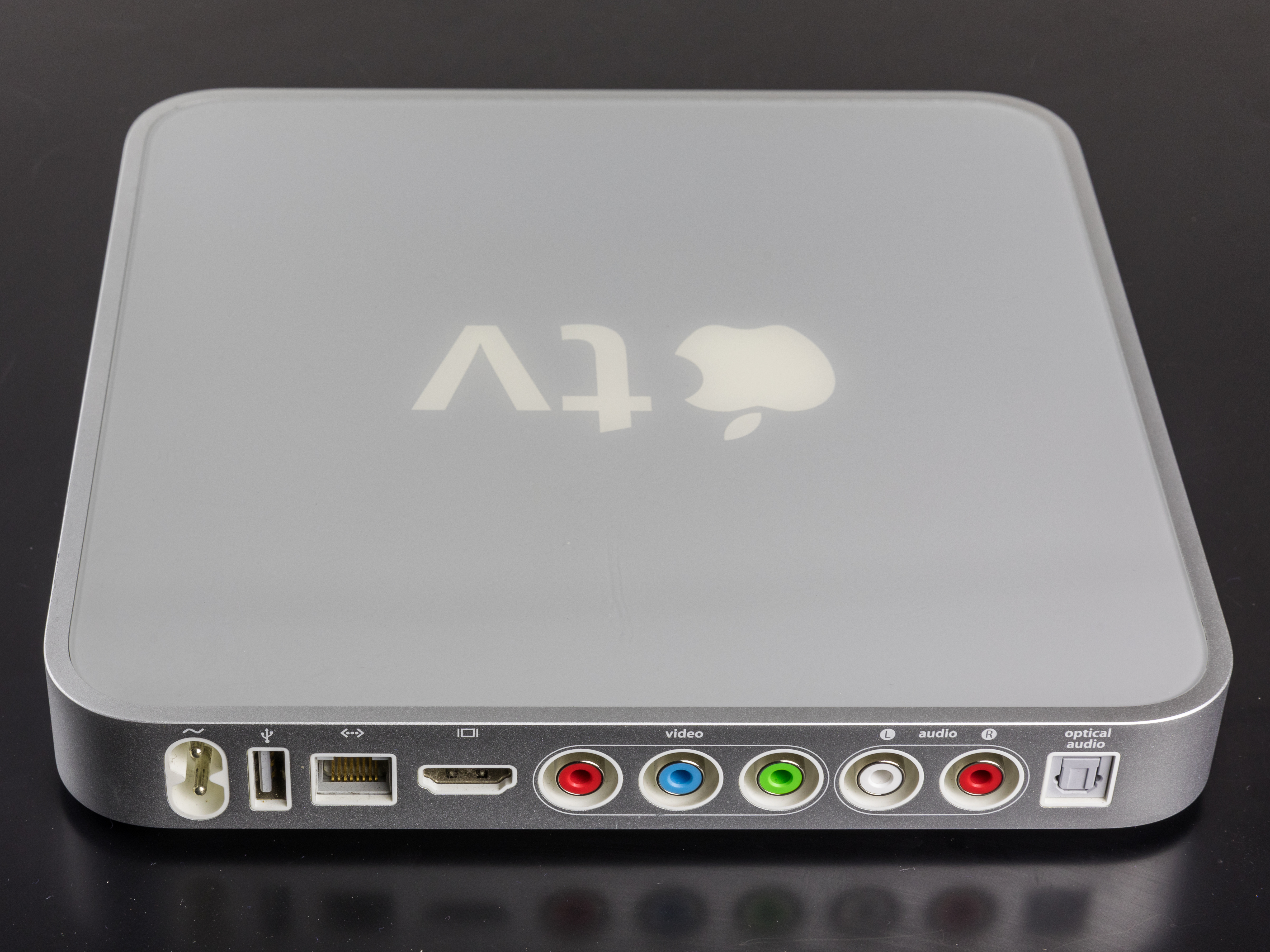
3. **The iPod Revolution: Music in Your Pocket**The 2000s ushered in a monumental shift in how we consumed music, largely spearheaded by the introduction of Apple’s iPod. Launched in 2001, this sleek digital music player quickly became a cultural icon, synonymous with personalized soundscapes and unparalleled convenience. It wasn’t merely a device; it was a declaration that music was now truly portable and intensely personal.
The iPod’s signature feature, the intuitive click wheel, offered a novel and satisfying way to navigate extensive music libraries. This innovative interface, combined with its ability to store thousands of songs, rendered bulky CD collections and clunky portable CD players obsolete for many. The iPod effectively democratized digital music access, moving beyond the nascent and often cumbersome practices of unlicensed downloading to a more streamlined and elegant solution.
Its phenomenal success transformed the music industry, impacting everything from distribution models to artist revenue streams. The iPod, with its simple design and powerful functionality, wasn’t just a gadget; it was a lifestyle statement. It set the precedent for future portable media devices, demonstrating the immense market appetite for digital content delivered with ease and style, and irrevocably altering the relationship between listener and music.
Read more about: Remember the ’00s? These 14 Pop Culture Moments and Trends Defined an Era!

4. **Wii’s Explosive Impact: Redefining Casual Gaming**Towards the latter half of the 2000s, a new console emerged from Nintendo that once again disrupted the gaming landscape, but this time by bringing gaming to an even wider, more casual audience. The Wii, launched in 2006, revolutionized interactive entertainment with its motion-sensing controls, making gaming accessible and engaging for everyone from children to grandparents.
The console’s killer app, *Wii Sports*, was not only the best-selling game of the decade but also a phenomenon that transformed living rooms into interactive arenas. Its simple yet addictive gameplay, requiring players to physically swing a remote like a tennis racket or bowling ball, broke down traditional barriers to gaming, inviting even the most reluctant participants to join in the fun. Other popular titles like *Super Mario Galaxy*, *Mario Kart Wii*, and *The Legend of Zelda: Twilight Princess* also showcased the console’s versatility and appeal.
The Wii’s success underscored a significant market trend: the desire for social, active, and easily understandable gaming experiences. It proved that innovation in control schemes could open up gaming to entirely new demographics, securing its place as a powerhouse in the late 2000s and early 2010s. The Wii’s influence resonated far beyond its lifecycle, pushing the industry to consider broader audiences and more intuitive interactions.
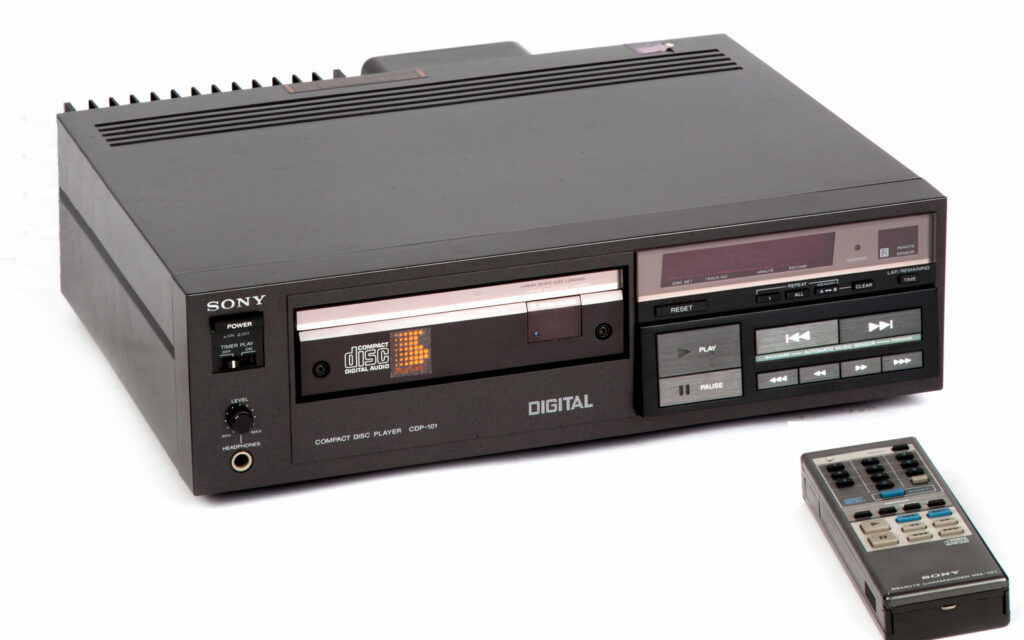
5. **The Golden Age of DVDs: Eclipsing Analog Media**The early 2000s witnessed a decisive victory in the format wars, as Digital Versatile Discs (DVDs) rapidly eclipsed the long-reigning videotapes as the preferred medium for home video. This transition marked a significant technological leap, offering superior picture and sound quality, enhanced durability, and a wealth of bonus features that videotapes simply couldn’t match.
By the early 2000s, DVDs had become commonplace, signifying a mass migration away from the analog constraints of VHS. While videotapes still held some prevalence at the decade’s outset, the advantages of DVD technology—including instant scene selection, multilingual options, and compact storage—proved irresistible to consumers. This shift wasn’t merely about convenience; it was about a higher fidelity entertainment experience.
The rapid adoption of DVDs signaled a growing consumer expectation for digital quality and convenience in home entertainment. This era represented a crucial step in the digitization of media consumption, paving the way for even more advanced digital formats and, eventually, the streaming revolution. The decline of videotapes and the rise of DVDs illustrated the relentless march of technological progress in the entertainment industry.

6. **Computer Animation’s Dominance: A New Era for Film**The 2000s were a transformative decade for the film industry, particularly with the advancements and exponential rise of computer-generated animation. Following the foundational success of *Toy Story* in the mid-1990s, computer-animated films moved from novelty to industry standard, fundamentally altering the landscape of movie production and audience expectations.
Pixar and DreamWorks Animation emerged as the leading, and often rivaling, studios in this new frontier. DreamWorks found its big break with the immense success of *Shrek*, which notably won the first Academy Award for Best Animated Feature in 2002. This success was followed by other hits like *Madagascar* and *Kung Fu Panda*, solidifying DreamWorks’ position as a major player.
Pixar, meanwhile, enjoyed critical and commercial triumphs with features like *Monsters, Inc.*, *Finding Nemo*, and *The Incredibles*. These films showcased not only stunning visual effects but also compelling storytelling that appealed to all ages. As computer animation flourished, traditional 2D animated films experienced a decline, with many underperforming at the box office, prompting even Disney Animation to pivot towards computer-animated productions, recognizing the clear shift in audience preference and technological capability.
7. **The Era of Flip and Keyboard Phones: Pre-Smartphone Connectivity**Before the ubiquity of the modern bar-shaped touchscreen smartphone, the 2000s were unequivocally the age of flip phones and keyboard phones. These devices were not just communication tools; they were fashion statements and integral parts of daily life, embodying the mobile connectivity of the decade. The satisfying snap of a flip phone closing or the tactile feedback of a physical keyboard defined mobile interaction for millions.
Models like the Motorola Razr V3i became iconic for their sleek design and widespread popularity. BlackBerry phones, with their full QWERTY keyboards, were indispensable for business professionals and text-savvy individuals, representing a powerful blend of communication and basic internet access. These phones were designed for calls, texts, and a growing, but still limited, array of mobile applications.
The sheer market penetration of these devices was staggering; the Nokia 1100, for instance, sold over 250 million units from its late 2003 launch through 2009, making it the world’s best-selling mobile phone and consumer electronics device at the time. This period represents a crucial precursor to the smartphone era, showcasing a diverse range of mobile device designs and functionalities before the ultimate consolidation around the full-touchscreen paradigm in the very late 2000s and early 2010s. The evolution of these phones highlights a fascinating chapter in personal technology, demonstrating how rapidly innovation can sweep through an industry, leading to certain forms fading from prominence as new ones emerge.
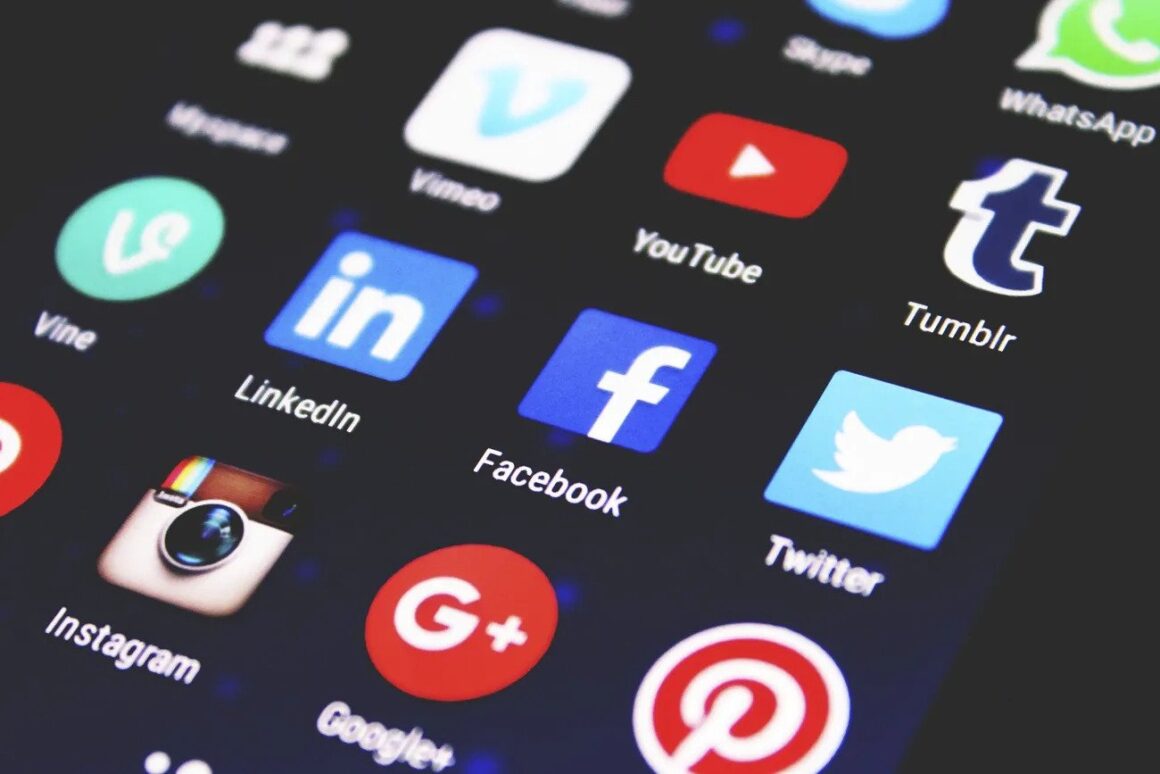
8. **The Ascent of Big Tech and Social Media Platforms**The 2000s were a foundational decade for what we now recognize as the global behemoths of Big Tech and the pervasive landscape of social media. Companies such as Apple, Alphabet (then Google), Amazon, Meta (then Facebook), and Microsoft, all primarily headquartered on the West Coast of the United States, saw their influence and reach expand exponentially during this period. These entities were not just creating new technologies; they were forging entirely new ways for people to connect, consume information, and interact with the digital world, laying the groundwork for their modern-day dominance.
This era witnessed the launch of numerous prominent websites and applications that would become household names. Wikipedia, launched in 2001, rapidly became the largest and most popular online encyclopedia, fundamentally changing how people accessed information. MySpace, emerging in 2003, captivated early social media adopters, offering a platform for personal expression and connection that was wildly popular before Facebook’s eventual rise in prominence.
Facebook itself debuted in 2004, initially targeting college students, but quickly expanded its reach. By 2008, it had surpassed MySpace as the most used social network, boasting over 350 million active users worldwide by the decade’s end. YouTube, launched in 2005, rapidly established itself as the main site for video sharing, while Twitter, founded in 2006, climbed to become the third-highest-ranking social networking site by 2009. These platforms collectively orchestrated a seismic shift in how society communicated and shared content, making the internet an increasingly interactive and personal space.
Beyond social networking and information, other crucial services emerged. Google Earth and Maps, Flickr, Mozilla Firefox, Reddit, Spotify, and Waze all launched within the decade, illustrating the diverse ways technology was beginning to embed itself into daily life. Even Skype, whose first beta version appeared in 2003, amassed over 600 million users by the decade’s close, underscoring the growing demand for digital communication solutions. The 2000s truly set the stage for our always-connected world, making these companies and platforms indelible parts of modern existence.
Read more about: Global Icons of 2025: Discover the Top Figures Dominating Conversations and Shaping Our World
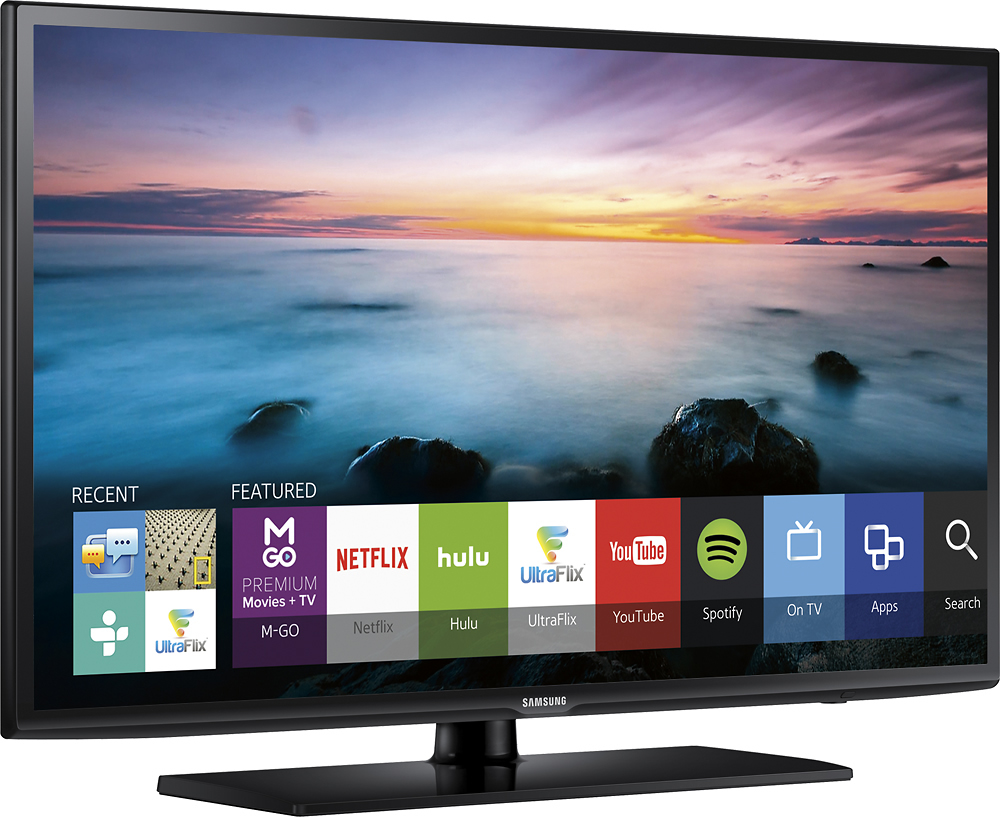
9. **Television’s Enduring Golden Age**While new technologies captivated audiences, television in the 2000s continued its reign as a powerful cultural force, offering a diverse array of programming that entertained, challenged, and defined the decade. This period saw the conclusion of beloved sitcoms, the rise of groundbreaking dramas, and the solidification of animated series as mainstream staples. The final episode of *Friends*, for instance, aired in 2004 to over 52 million viewers in the United States, leaving an enduring legacy and even spawning a spin-off, *Joey*, which continued until 2006.
Beyond network television, premium cable channels like HBO thrived with critically acclaimed and immensely popular shows such as *The Sopranos* and *Curb Your Enthusiasm*, which even featured crossover moments. This era also introduced a slew of other genre-defining shows including the gritty drama *Breaking Bad*, the workplace comedy *The Office*, the heartfelt *Gilmore Girls*, the fashion-forward *Sex and the City*, and the critically revered *The Wire*. These series pushed boundaries in storytelling and character development, elevating television to an art form.
Comedy experienced a vibrant resurgence, exemplified by Dave Chappelle’s satirical sketch show, *Chappelle’s Show*, which captivated audiences from 2003 to 2006. Other popular comedy shows of the mid-2000s included *The Bernie Mac Show* and *Everybody Hates Chris*, showcasing a rich variety of comedic voices and styles. These shows were not merely entertainment; they often reflected and influenced cultural discourse, providing both escapism and sharp social commentary.
Children’s and adult animation also flourished, with shows like *SpongeBob SquarePants* achieving widespread popularity. Other notable animated series included *Avatar: The Last Airbender*, *Teen Titans*, *The Fairly OddParents*, *Kim Possible*, *The Powerpuff Girls*, *Ben 10*, *The Boondocks*, *Futurama*, *Family Guy*, *King of the Hill*, and *South Park*. This diverse catalog ensured that television remained a central, dynamic, and ever-evolving medium throughout the 2000s, influencing everything from daily conversations to long-term cultural trends.
Read more about: The Fifties Unpacked: An Expert’s Guide to the Defining Cultural, Social, and Global Shifts of a Transformative Decade

10. **Music Industry’s Digital Evolution**The 2000s heralded a profound, yet often tumultuous, transformation for the music industry, driven primarily by the unprecedented access consumers gained through the internet. This digital revolution not only empowered independent artists to distribute music without traditional record label support but also led to a significant decline in music sales, largely attributed to the widespread practice of unlicensed online downloading. In response, business models like “360 deals” emerged, where companies provided support in exchange for a percentage of revenue from recorded music, live performances, and publishing, adapting to the shifting landscape.
The decade saw a diverse array of musical genres reach commercial peaks and cultural significance. Hip hop, in particular, dominated the musical landscape, influencing various aspects of popular culture. American rapper Eminem stood out as the best-selling musical artist of the decade, selling an astounding 32 million albums. Other prominent hip hop artists like Jay-Z, Kanye West, and Lil Wayne contributed to a stylistically diverse genre that included gangsta rap and crunk. R&B also gained immense prominence with artists such as Beyoncé, Usher, and Alicia Keys captivating global audiences.
Alternative rock experienced a resurgence with the garage rock and post-punk revivals bringing bands like The Strokes, The Killers, and Arctic Monkeys into the mainstream. Indie rock saw a proliferation of commercially successful acts, while pop-punk and emo-pop found a massive teenage following with bands like Blink-182, My Chemical Romance, and Fall Out Boy. The early and mid-2000s also saw the popularity of disco-inspired dance genres, with French house and funky house tracks breaking into the charts, featuring artists like Daft Punk.
Technological innovations also shaped the sound of the decade, with the growing use of auto-tune becoming a significant trend. Initially popularized by Eiffel 65 in the late 90s, it found its way into critically acclaimed albums by Daft Punk and Radiohead in 2001, and by 2008, it was a mainstream fixture utilized by artists like Lil Wayne, T-Pain, and Kanye West. Towards the end of the decade, electronic dance music began its ascent, eventually dominating Western charts and influencing a stylistic shift that saw a diminishing amount of rock and hip hop in the mainstream, marking a new chapter in musical evolution.
Read more about: Remember the ’90s? These 11 Chart-Topping Moments and Vibe-Defining Hits Shaped the Decade’s Pop Landscape.

11. **Fashion’s Eclectic 2000s Revival**The fashion landscape of the 2000s was a vibrant, often contradictory, blend of futuristic visions, nostalgic revivals, and emerging subcultures, making it one of the most distinctive decades in style history. The decade kicked off with the Y2K aesthetic, a futuristic style built on the hype of the new millennium, characterized by shiny metallic clothing, digital cameras, and the then-new iPod Classic. However, following the events of 9/11, a more casual sensibility quickly re-emerged, shifting the sartorial focus.
For women, low-rise jeans and crop-tops were immensely popular in the early to mid-2000s, often seen on pop stars like Britney Spears. Baggy cargo pants were a widespread trend for both es, persisting until around late 2007. Bell-bottoms held their ground as the dominant pant style for women until about 2006, when the tide began to turn towards more fitted silhouettes. Men, too, moved from the late 90s baggy pants to boot-cut pants and jeans by 2003, which remained standard until about 2008.
A significant feature of 2000s fashion was its embrace of 1980s trends. Velour tracksuits, reminiscent of early 80s styles, found a new lease on life in the early 2000s, while tapered pants saw a revival later in the decade. The rise of skinny jeans became a defining moment, becoming a staple for young women and men, heavily influenced by movements like Jerkin’ and leading major brands like Gap and Levi to launch their own lines. Footwear also evolved, with chunky sneakers like Skechers, often endorsed by celebrities, dominating the early part of the decade before flatter, more compact styles came into vogue.
Beyond mainstream trends, subcultures carved out their own fashion statements. “Geek chic” emerged in the mid-2000s, where individuals adopted stereotypically geeky fashions like oversized horn-rimmed glasses (often with non-prescription lenses), suspenders, and highwater trousers. Emo fashion, characterized by black or dark-colored skinny jeans, band T-shirts, and long side-swept bangs, became popular among teenagers, heavily linked to the success of emo music groups. Hip hop fashion continued to be influential, initially featuring oversized shorts, jewelry, and jerseys, but by the late 2000s, it shifted towards more fitted and vibrantly colored clothing, often incorporating skinny jeans, demonstrating the decade’s dynamic and diverse approach to personal style.
Read more about: Reviving Iconic Fashion: 14 Throwback Trends We Can’t Wait to See Again
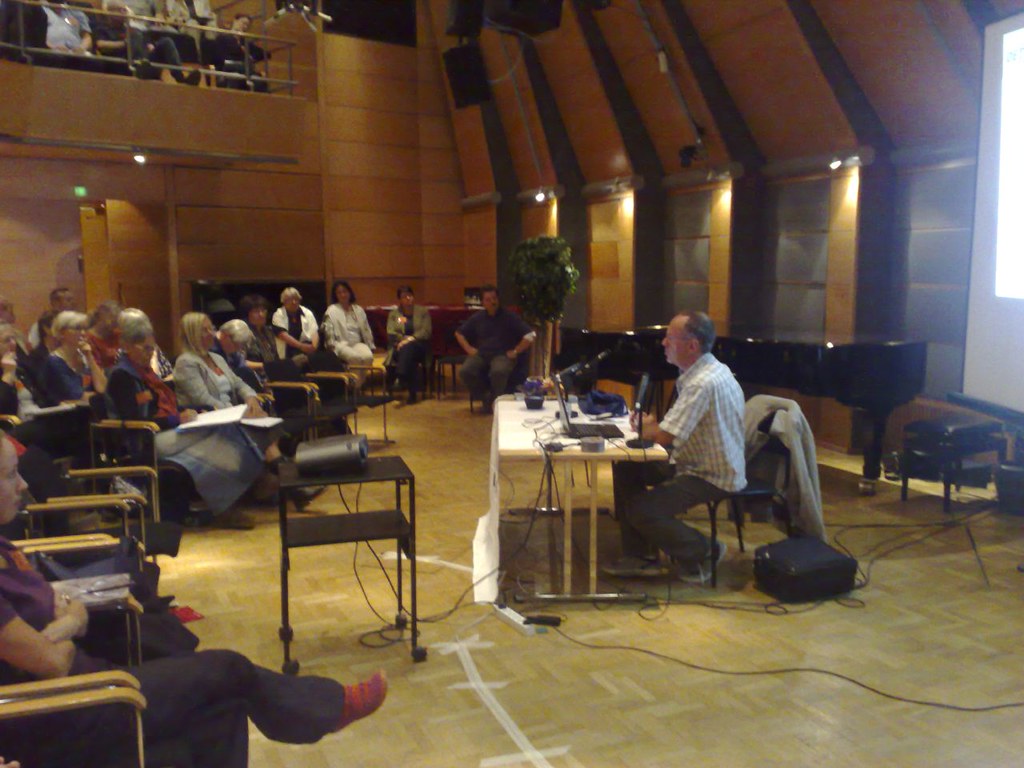
12. **Sociopolitical Ripples and Cultural Sensitivity**The 2000s were undeniably shaped by significant sociopolitical events, particularly the September 11th attacks, which left an indelible mark on popular culture and fostered a heightened sense of sensitivity in media imagery. The aftermath of 9/11 resonated deeply, causing a shift in how difficult events were portrayed and consumed, with Enya’s “Only Time” even becoming a commercial hit after its widespread use in broadcasts following the tragedy. This event underscored a collective vulnerability and a reevaluation of national identity.
The global political landscape, particularly the lead-up to the 2003 invasion of Iraq and its subsequent fallout, also seeped into popular music and public discourse. English musician George Michael’s controversial 2002 song “Shoot the Dog” explicitly criticized George W. Bush and Tony Blair. Similarly, the American country music band The Dixie Chicks faced boycotts and public protests in the U.S. after lead vocalist Natalie Maines expressed shame that President Bush was from Texas, highlighting the intense divisions of the era. Madonna’s original music video for “American Life,” featuring violence and war imagery, was banned by music television stations for being deemed unpatriotic during the war.
Amidst these geopolitical tensions, global efforts towards social justice also gained momentum. The Live 8 concerts in 2005, a series of benefit events held across G8 states and South Africa, garnered massive attention. Timed to precede the G8 conference, these concerts supported the “Make Poverty History” campaign and the Global Call for Action Against Poverty. Featuring over 1,000 musicians and broadcast widely, Live 8 successfully pressured G8 leaders to pledge a doubling of aid to poor nations, including significant funds for Africa, showcasing the power of cultural mobilization.
The political leadership of the United States throughout most of the decade was defined by George W. Bush, who served as president from 2001 to 2009 during the post-Cold War era. His tenure saw significant domestic and international challenges. Towards the end of the decade, the political landscape shifted dramatically with the election of Illinois Senator Barack Obama as president in 2008, signaling a new chapter. These events, from tragic attacks to global humanitarian efforts and shifts in political power, collectively contributed to a period of intense public engagement and evolving cultural sensitivities.

13. **Cinematic Innovation: From Docs to 3D Blockbusters**The film industry in the 2000s experienced a dynamic period of innovation, expanding beyond the rise of computer animation to embrace new storytelling formats and groundbreaking viewing experiences. Computer-generated imagery became increasingly widespread, enhancing the visual spectacle of films across genres. This decade also marked a significant resurgence in the popularity of documentary and mockumentary films, offering audiences both factual insights and satirical perspectives on contemporary issues.
Notable documentaries like *March of the Penguins*, *Super Size Me*, and Michael Moore’s *Fahrenheit 9/11* garnered considerable attention, with the latter becoming the highest-grossing documentary of all time. Mockumentaries, such as *Borat* in 2006, also flourished, blurring the lines between reality and satire. Alongside these, online films gained traction, and the conversion to digital cinema began, hinting at the future of film distribution and exhibition. Critically acclaimed narrative features like *Eternal Sunshine of the Spotless Mind* and *Lost in Translation* also showcased the decade’s artistic depth.
Blockbuster cinema thrived, with fantasy epics like Warner Bros.’ *Harry Potter* and *The Lord of the Rings* series dominating the box office. *The Lord of the Rings: The Return of the King* achieved remarkable success, winning all eleven Academy Awards for which it was nominated, tying for the most awards won in Oscar history. The superhero film genre also saw renewed and intense interest, with films like *X-Men*, *Spider-Man*, *Batman Begins*, and *Iron Man* (which launched the Marvel Cinematic Universe) captivating audiences, partly attributed to advances in special effects technology and the sociopolitical climate following 9/11.
Perhaps the most visually groundbreaking advancement was the increasing success of 3D films, culminating in the unprecedented triumph of *Avatar* in December 2009. Directed by James Cameron, *Avatar* made extensive use of cutting-edge motion capture techniques and was released in various 3D formats, pushing the boundaries of immersive storytelling. While critics like Roger Ebert remained skeptical of 3D’s realism, *Avatar*’s success underscored a clear shift towards technologically advanced, visually stunning cinematic experiences, redefining audience expectations for what a movie could be.

14. **The Democratization of Information: Web 2.0 and Beyond**The 2000s fundamentally reshaped how information was created, disseminated, and consumed, ushering in the era of Web 2.0 and the powerful concept of the “wisdom of the crowd.” This decade saw the spotlight shift to social information sites that leveraged human opinion and collaboration, moving beyond static web pages to dynamic, user-generated content platforms. These changes profoundly influenced public knowledge, discourse, and the very nature of media.
One of the most impactful launches was Wikipedia in early 2001. It rapidly became the largest and most popular online encyclopedia, a testament to the power of collective knowledge. This platform exemplified how crowdsourcing information could create a vast, accessible, and constantly updated repository of knowledge, challenging traditional encyclopedic models. Sites like Yahoo! Answers and Reddit, also launched in the decade, further amplified this trend, demonstrating the public’s appetite for shared information and collective problem-solving.
Beyond text-based information, the 2000s also witnessed the birth and popularization of the podcast. The term itself was first used in 2004, and by 2009, a significant milestone was reached: one in four Americans had downloaded a podcast. This new audio format allowed for on-demand listening of diverse content, from news and educational programs to entertainment and niche discussions, effectively democratizing broadcast media and offering an alternative to traditional radio. The convenience and personalized nature of podcasts resonated deeply with an increasingly mobile and digitally-savvy audience.
These platforms and formats collectively underscored a transformative shift in how individuals accessed and engaged with information. The internet evolved from a passive consumption medium to an interactive arena where users were not just recipients but active participants and contributors. This democratization of information, driven by the principles of Web 2.0, fundamentally altered journalism, education, and public discourse, laying crucial groundwork for the pervasive digital information ecosystem we experience today.

15. **Legendary Sounds: Concerts, Comebacks, and Tributes**Beyond genre shifts and digital disruptions, the 2000s were also a decade rich with legendary music moments, featuring iconic concerts, highly anticipated reunions, and a somber reflection on the lives of influential artists. These events underscored the enduring power of live performance and the deep connection between artists and their global fan bases, even as the industry faced unprecedented change. The Rolling Stones, for example, made history with their ‘A Bigger Bang’ tour, declared the highest-grossing tour of all time in November 2006, earning a staggering $437 million.
Reunions of beloved bands offered fans a chance to relive past glories and witness new chapters. The original five members of the English new wave band Duran Duran reunited in the early 2000s, delighting a generation of listeners. Simon and Garfunkel performed together publicly for the first time in a decade at the 2003 Grammy Awards, while British vocal pop group Take That made a triumphant return to recorded music in 2006 with their comeback album, *Beautiful World*, hitting no. 1 on the UK charts. Perhaps the most anticipated reunion was Led Zeppelin’s one-off Ahmet Ertegun Tribute Concert in London in 2007, which set a world record for the “Highest Demand for Tickets for One Music Concert” with 20 million online requests, proving their unparalleled legacy.
The decade also saw the rise of a new wave of chiptune culture, with a strong emphasis on live performances and record releases, signaling a creative offshoot distinct from earlier electronic music scenes. A particularly grassroots phenomenon occurred in the UK in 2009 when a Facebook campaign successfully propelled Rage Against the Machine’s 1992 track “Killing in the Name” to the Christmas Number One slot, unseating the usual *The X Factor* winners. This organic movement highlighted the power of collective fan action against what many perceived as a “sterile pop monopoly.”
However, the 2000s also brought moments of profound loss for the music world. Tragic deaths claimed many influential figures, including Aaliyah in 2001, George Harrison of The Beatles in 2001, Lisa Lopes of TLC in 2002, James Brown in 2006, Johnny Cash in 2003, Ray Charles in 2004, and Michael Jackson in 2009, whose passing generated the largest global public mourning since Princess Diana. These moments, both celebratory and sorrowful, collectively paint a picture of a decade that was vibrant, transformative, and deeply connected to its musical heroes and the powerful collective experiences they created. The cultural tapestry of the 2000s, woven from these threads of innovation, expression, and shared moments, continues to resonate and influence the world we inhabit today, a testament to its enduring significance.


